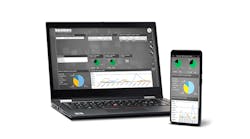With the increasing use of wired and wireless digital communications, technicians and field engineers are communicating with and performing maintenance on field devices from practically anywhere—and often not at the transmitter face with screwdriver in hand to “tweak the pots” unless necessary to force a signal or isolate the device from the process, as they would when calibrating. Many practitioners mistakenly believe that because a digital transmitter is factory calibrated for a wide signal range, and they can configure the device anywhere within the range, out-of-the-box, with reasonable expectation of useable signals, that calibration and configuration are the same, which is certainly not the case.
Configuration refers to setting the transmitter parameters only, without any signal forcing other than simulation of inputs, and thus no traceability to a reference device. Because they don’t need to be able to simulate input signals, several configurators on the market are based on a ruggedized, perhaps intrinsically safe tablet or smart phone. These devices, in addition to supporting the field protocol, typically through a Bluetooth or USB accessory/modem, also often provide WiFi- or cellular-based Ethernet connectivity to communicate with the enterprise maintenance system and control system.
Calibration, on the other hand, is a comparison of the device under test against a traceable reference instrument and documenting the comparison. Therefore, to calibrate a transmitter, the input needs to be generated at the same time the output is being measured. If the calibration is done with a documenting calibrator, it will automatically document the calibration results. Fortunately, most calibrators with digital communications at least have the documenting capability, thus eliminating transcription errors while providing time stamped end-to-end traceability. Unfortunately, some calibrators have limited memory and may only be capable of handling as few as 20 data sets before needing to be downloaded. On the positive side, this will encourage the technicians to download their results every day, but the objective of technology is to make life easier.
Another key consideration for calibrators is their ability to isolate the input from the output because, as we know, the simple act of measuring something affects the measurement. With calibrators, we are both forcing or inputting the measurement and measuring the resulting output from the device being calibrated. In my experience, running off battery is a great way to remove one potential common-mode source of error—the power supply, especially if it’s an AC source. Mind you, I was using a laptop-based tool for the measurement, so it would not have the isolation that a properly designed industrial instrument will, but it does prove once again that cheap and multipurpose are not quite the same as dedicated and industrial.
The challenge with many calibrators is getting the documenting information in their memory from the calibrator into the main computer storage platform. All calibrators communicate with the calibration module that is, hopefully, part of or at least accessible from the instrument maintenance system. The connection between the calibrator and computer hosting this software uses a wide range of technologies from serial (tough finding computers with this connection still) to the more common USB interface, with the few that now support Bluetooth about the only current wireless option. There are also still a few that require manually pulling the SD card and installing it in the calibration company’s standalone proprietary software, then porting it from there (sometimes as Excel files, though most systems support SQL) to the enterprise’s maintenance software for permanent archiving and, more important, access by the QA department and potential use for statistical analysis and control.
Calibrators are continuing to get better, however, as we can see, there is still room to improve, especially with how they integrate with the balance of plant. Considering their primary purpose is to provide a traceable reference, calibrators are making progress on the next step in integrating with the balance of plant. With the trend toward non-proprietary SQL databases, USB and Bluetooth for higher-speed data transfer, I am confident we will soon see devices with bidirectional communications directly from the field to the quality system to support and prompt the technician on their rounds while populating the central database. All we will need then is the infrastructure in the plant to make it possible, so once again we have Catch 22: no capable field devices without infrastructure, and no infrastructure because we don’t have enough capable field devices to justify installing it.

Leaders relevant to this article:




